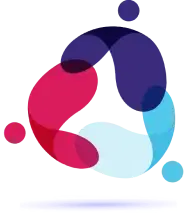
Factor VIII levels at 40%, 3 days after infusion
Hypothetical child and scenario
Factor VIII levels at 40%, 3 days after infusion
Hypothetical child and scenario
A true factor replacement that provided high sustained factor levels for kids
Factor activity levels for children aged 6 to <12 years
Factor activity levels for children aged 6 to <12 years

*
Evaluated in 36 children aged 6 years to <12 years in the XTEND-Kids study.
Factor activity levels for children aged <6 years
Factor activity levels for children aged <6 years

†
Evaluated in 36 children aged 1 year to <6 years in the XTEND-Kids study.
What do the results mean?
What do the results mean?
- Peaks refer to the highest amount of factor in your child’s body after infusion
- Troughs are the lowest levels of factor before the next infusion
- Half-life is the length of time that it takes for only half the drug to remain active in your body. A drug's half-life plays a key role in dosing
- Peaks refer to the highest amount of factor in your child’s body after infusion
- Troughs are the lowest levels of factor before the next infusion
- Half-life is the length of time that it takes for only half the drug to remain active in your body. A drug's half-life plays a key role in dosing
40
40-hour average half-life in children‡
ALTUVIIIO has the longest half-life of any Factor VIII replacement therapy for children with hemophilia A.
ALTUVIIIO has the longest half-life of any Factor VIII replacement therapy for children with hemophilia A.
ALTUVIIIO was studied over 1 year in the XTEND-Kids study
74 previously treated male children under 12 years of age who switched to ALTUVIIIO:
- 36 children aged 6 to under 12 years
- 38 children under the age of 6
- Efficacy was evaluated in 72 of these children
74 previously treated male children under 12 years of age who switched to ALTUVIIIO:
- 36 children aged 6 to under 12 years
- 38 children under the age of 6
- Efficacy was evaluated in 72 of these children

The primary goal of the XTEND-Kids study was to determine whether or not children under 12 years of age developed inhibitors to ALTUVIIIO.
The primary goal of the XTEND-Kids study was to determine whether or not children under 12 years of age developed inhibitors to ALTUVIIIO.
0
Inhibitors detected in the 74 children
Although no inhibitors were found in clinical studies, inhibitors are possible with ALTUVIIIO.
Although no inhibitors were found in clinical studies, inhibitors are possible with ALTUVIIIO.
Kids can experience proven bleed protection on ALTUVIIIO prophylaxis§
0
Median bleeds per year||
(median annualized bleed rate)
(median annualized bleed rate)
0.6
Mean bleeds per year||
(mean annualized bleed rate)
(mean annualized bleed rate)
0
Median joint bleeds per year||
(median annualized joint bleed rate)
(median annualized joint bleed rate)
Over 1 year on ALTUVIIIO prophylaxis:
- 64% of children had zero bleeding episodes
- 83% of children had zero joint bleeds
- 88% of children had zero spontaneous bleeds
- 64% of children had zero bleeding episodes
- 83% of children had zero joint bleeds
- 88% of children had zero spontaneous bleeds
‡
The half-life was 42.4 hours for children aged 6 to under 12 years and 38 hours for children aged 1 to under 6 years.
§
Efficacy was evaluated in 72 children in the XTEND-Kids study.
||
Data based on treated bleeds.
Find your CoRe Manager and connect today!
Sanofi Hemophilia Community Relations and Education (CoRe) Managers offer education to people living with hemophilia and their families. CoRe Managers provide information about living with hemophilia and treatment options. Use our handy CoRe Locator to find the CoRe team member nearest you.

